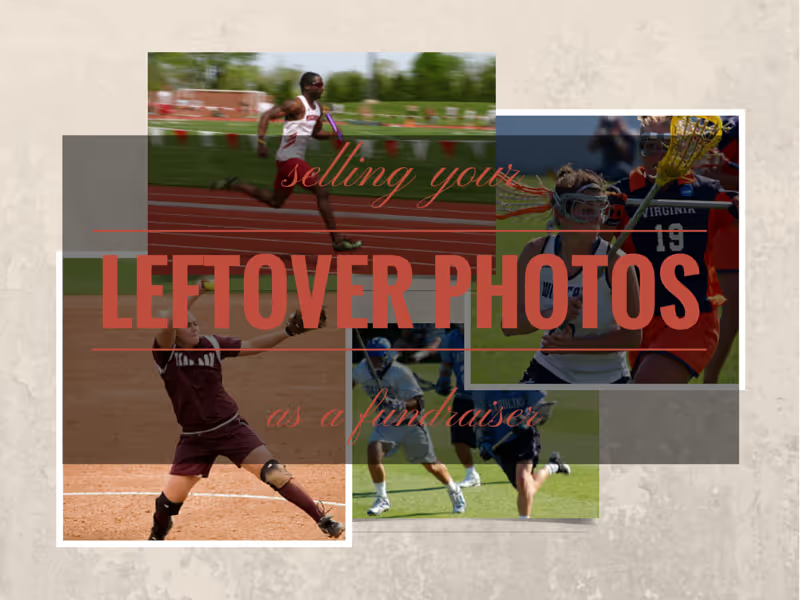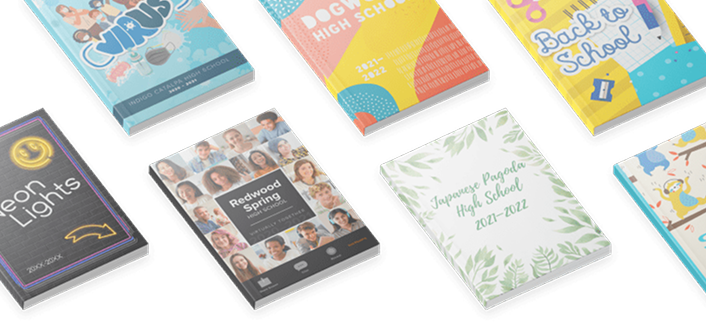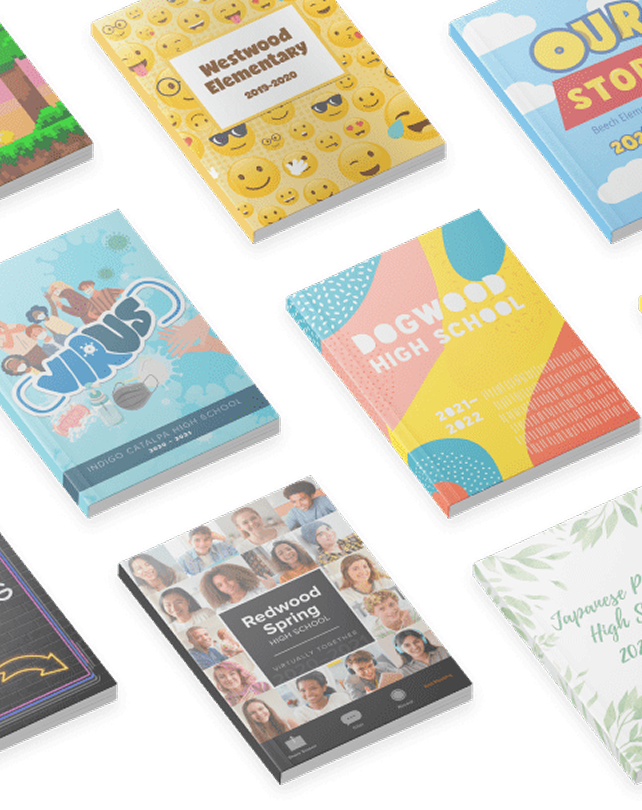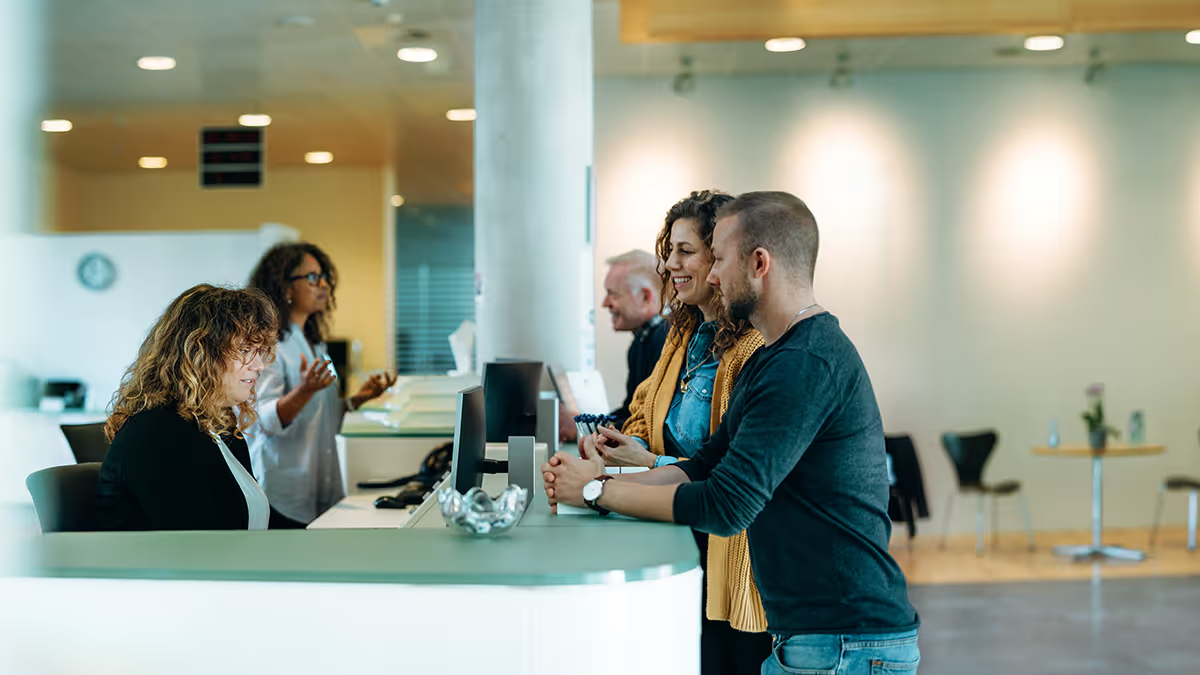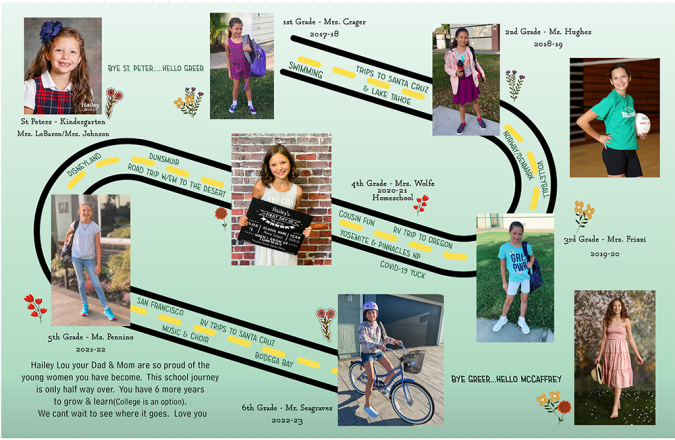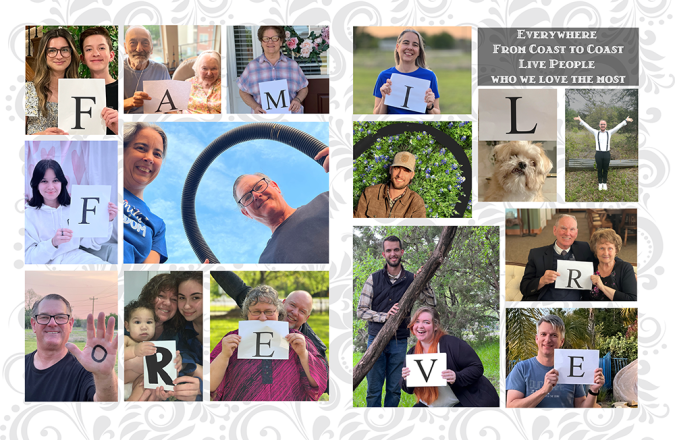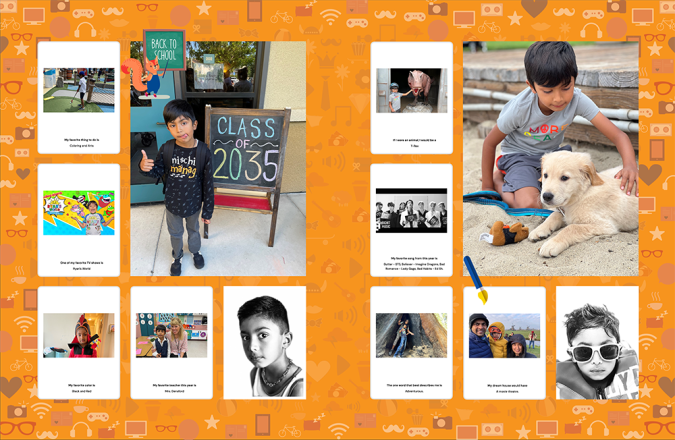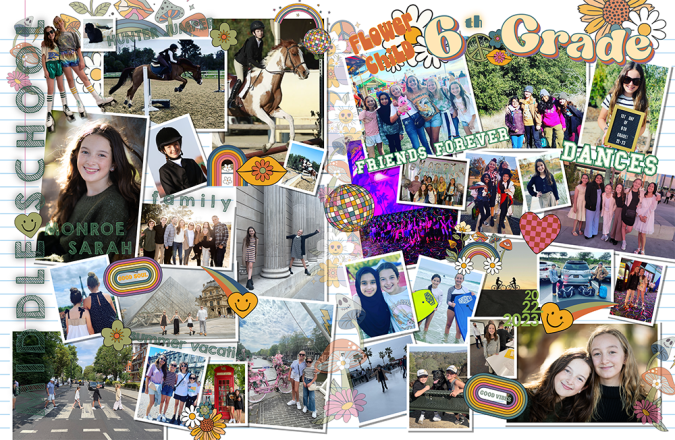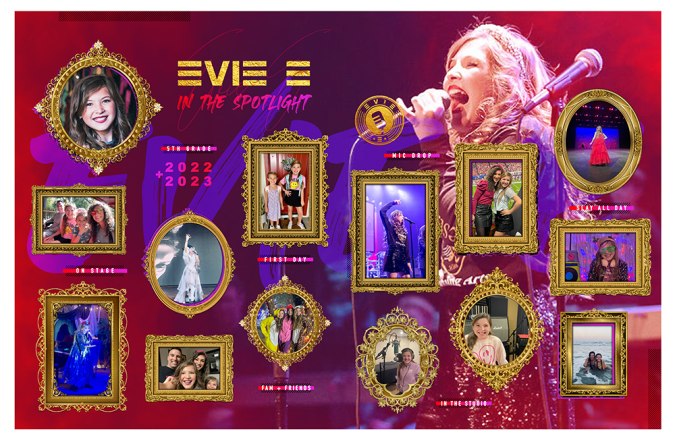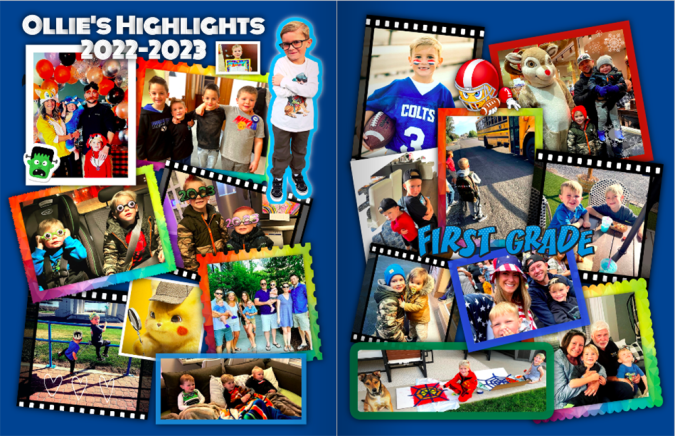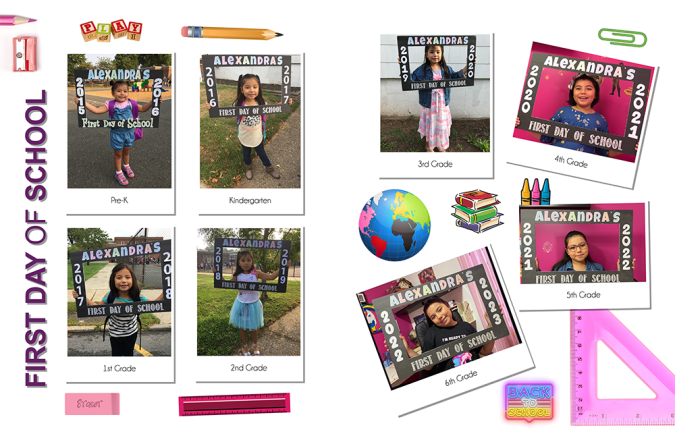Most popular
Subscribe to our blog
Most recent

Build positivity into your yearbook committee: a unique exercise to try
Start the Positivity Flow
After you’ve been working with your yearbook committee for a few weeks this fall (so they've already gotten to know each member a bit), devote some time during a meeting for a team-building exercise. Tell them that you want to talk about each individual's wonderful contributions to your committee. To start, have each person come one at a time, and sit in front of your whiteboard at the front of the room. Then have every other person on your committee write positive things about that person on the whiteboard around them! They can write great characteristics about the person, unique skills that they use to bring something special to your team, or even just little notes about their general attitude. The point is to focus on what each individual offers that’s great!Use the Exercise for Success
To make this kind of positivity exercise really stick, take a picture of each yearbook committee member smiling, surrounded by the positive notes that the rest of your team just shared with them. Create a bulletin board in your room to post the photos, and give each individual a copy to keep. It’s a great exercise to build up trust and excitement among your team. And it’s something that you, and everyone else on your committee, can look back to for inspiration when they're facing a tough day in the yerd world.Drive Your Message Home
The first goal of setting up a positive environment is to enhance your committee’s work productivity and camaraderie, but it’s also a tool you can use to recruit more members to your team! Make sure you’re sharing the fun photos you take during this exercise on social media and on your Treering community pages. Although the members of your team will naturally talk about how much they enjoy being part of the yearbook committee, this is an extra way to get the message out to a wider audience of students and parents. And that’s one more step in the right direction to attracting the best new members to your team!Build Trust in Your Yearbook Committee
Part of your role as the adviser to the yearbook committee is to help create a sense of team and trust among the rest of your crew. Exercises like this one are a simple way to spread some positivity, which translates to a more productive and energized team. Not to mention that the more your team thinks about all the things they love about their fellow committee members, the more they’ll enjoy the experience of working with you all! So put this particular exercise to work, and then seek out a few more that will help your yearbook committee bond. With a little help from their fearless leader (you!), each of the individuals you’ve recruited will be working together like a well-oiled machine in no time!
Prep for the first day of school: what you need to plan out now
Get Brainstorming
To capture those awesome first-day-of-school shots, you need to have some cool ideas in mind before the big day arrives. If you can, get your yearbook committee together in the weeks before school starts to brainstorm some of the most important memories that are made on that first day of school. Those are exactly the moments you want to nab, so that they can be commemorated on the pages of your book! Often, there are traditions that your school has on the first day of school--perhaps a parents' breakfast, coffee and donuts in the atrium for the students, or a fun welcome back celebration. You’ll also want to grab some candid shots of students as they enter the school, or perhaps grab some quotes about what students are excited for at the end of their first day back. When you have a list of photo ops in advance, you’ll be much more likely to grab the best shots for the final pages of your book!Lay Out Your Props
Like any photo shoot, your first day of school picture opportunities can be made even better with a few props. When you get your committee together to brainstorm photo opportunities, don’t forget to include some time to think about any props you’d like to include on the big day. This could be a small, stuffed version of your school’s mascot, a chalkboard frame that you can write a student’s grade on as they’re entering the school, or even a giant pencil to depict their return to academics. Then gather those props and bring them to school before the first day arrives. This way, you won’t be running around trying to gather everything up at the last minute, potentially missing great picture opportunities on the first day of school because you’re running late or frazzled.Prep Interview Prompts
Finally, make sure you have your interview prompts ready to go if you plan on conducting any interviews for the content in your yearbook. These prompts could include:- What students did over the summer: include a feature that covers how much fun the kids at your school had on summer break.
- What they’re most looking forward to: at the end of the first day back, interview students to ask what they’re most excited about in their new grade.
- What they’re wearing: create a fun mini-fashion feature, since students are often dressed their best on that first day back in the classroom.
The First Day of School
While there are many important days throughout the year that you want to capture, the first day of school is one of the biggest. Students look forward to reconnecting with their classmates, and getting back into a routine. By thinking about the content you can create out of this big day at your school in advance, you ensure that you cover all of its most important aspects. From traditions on your campus to just checking out what students did over the summer, it’s the perfect time to kick off your school year, and your yearbook, with a bang!
Increase yearbook committee sign-ups with this free template
- Customize it, print it out, and pass it around at your first yearbook committee meeting.
- Keep it in Google Doc format, and link to it in a back-to-school email that promotes your yearbook sale--with a reminder that there won’t be a yearbook without community support!
- Set up a yearbook table at back-to-school night. Have the Editor-in-Chief (or another representative) there to answer questions and prompt attendees to sign up.
- Hit up your PTA/PTO meeting, and use the form to recruit new committee members.

Determine your yearbook sections: get your content organized before school starts
Identify Your Features
To start, lay out the major features and articles you want to cover throughout the year. This doesn’t need to be a detailed account of what you’ll include, just a basic list of your sections, and the major features you absolutely must include in your content. You can begin by using last year’s yearbook as an example. Go through and make a list of the sections you definitely want to include in this year’s publication. This will make up about 90% of the features you include in next year’s book. And for that remaining 10%? Well, that can be brainstormed with your committee once everything starts, and can be solidified as events and unexpected stories arise during the school year. This process helps ensure that none of the basics fall through the cracks once you get started on all the exciting special features. It also helps you dole out tasks to your committee from day one, ensuring all the big pieces get apportioned fairly.Organize Your Thoughts
Now that you have this list, you need to find a way to get--and keep--your yearbook sections super organized from the first day of the school year. As I often recommend, a Google spreadsheet can be the perfect way to do this. Not only is it easy to access on the go, but you can share it with your committee without constantly sending files back and forth, keeping everyone on your team in the loop with content ideas, next steps, and a reminder of who’s tackling each project. To start, just create a tiered document (or use ours as a template) to track your ideas for each of your yearbook sections. Columns for the article status, deadline, and who is responsible for the content will help keep you organized once the season kicks off. Remember, you don’t have to fill in each of the columns now. This spreadsheet simply creates an organized direction for your content that you can work from in the fall. This tab may look very similar to your master calendar, and feel a bit redundant. But it serves an important purpose--by grouping articles by topic, rather than timeline, you're providing yourself with an overview of all your content, in similar sections. You can see the status of all class pages, all sports pages...and make sure nothing gets left out (a friend of mine has their Speech and Debate team completely left out of their published, finalized yearbook this year--an oversight that could have been caught with a spreadsheet like this!).Prioritize Your Yearbook Sections
Next, prioritize what needs to happen first. To make this simple, there's a column in your content spreadsheet that lists out due dates for each of your features. This will give you an idea of what needs to be completed immediately. As you identify due dates, add each piece of content to your master calendar. As you complete each feature, make sure you highlight it, or make it glaringly obvious what's been completed and what still needs work (A 'red-yellow-green' color-coding system might help, as might strikethrough). This will ensure that articles don't slip through the cracks, leaving you in a rush to complete them just before each deadline. And if you don’t have due dates for all of your features, don’t fret: you can always fill them in once the school year starts!Prep Now for an Easy School Year
While summer is a time for teachers to take a break and relax, you can make your school year go much more smoothly when you do a little prep work for your yearbook process in advance. A few hours of your time now can help you get in the right mindset, and also create motivation for your committee from the moment you step back in the classroom. And that will definitely translate to a more organized process for your content, and more inspired articles for the pages of your book.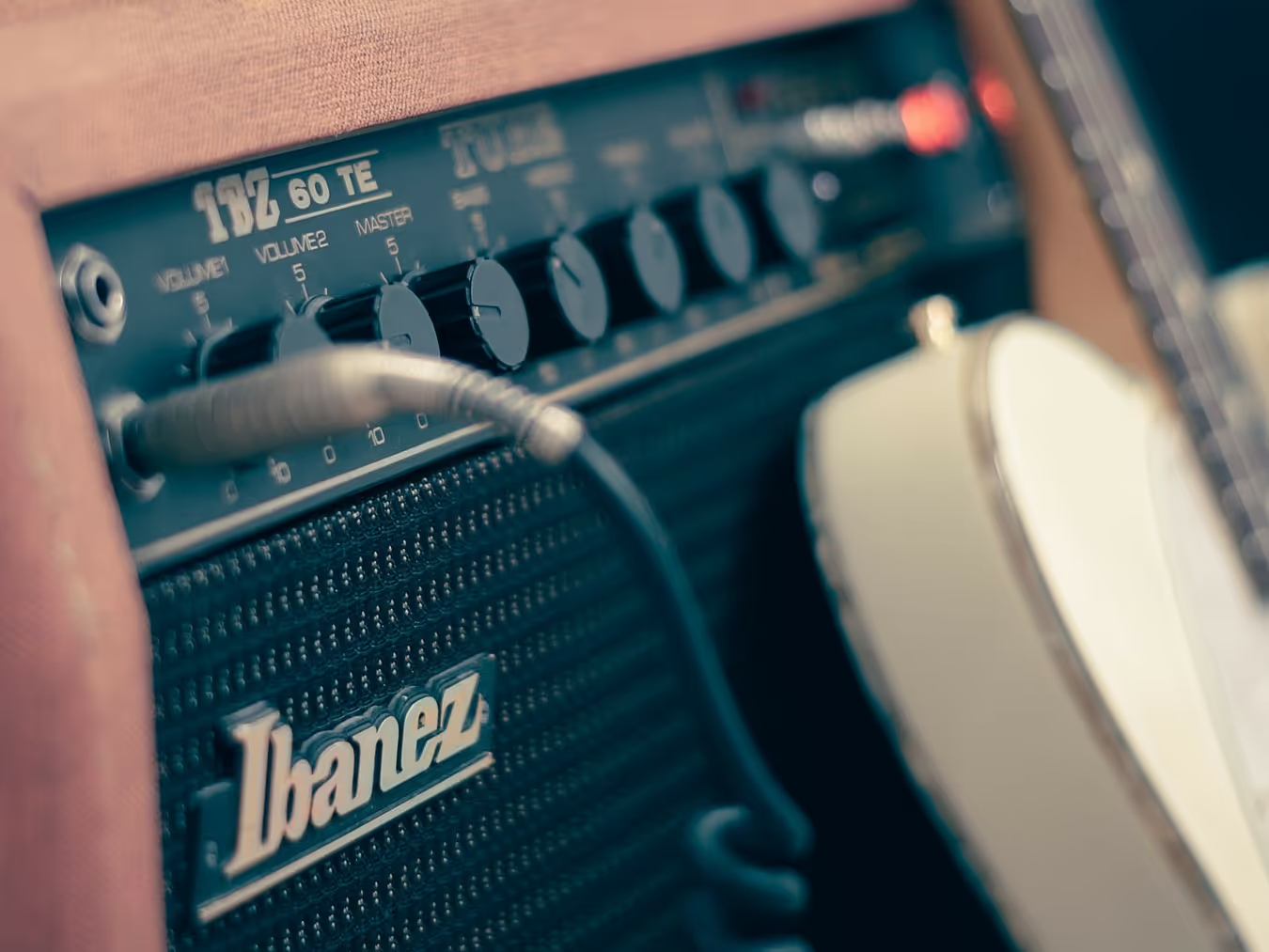
Creative yearbook ideas: great music can keep everyone on track
Music as a Creativity Generator
There’s been a lot of research done on how music affects the brain, and one of the unanimous conclusions is that adding some fresh music to the background of your workspace can help you focus, and supports your ability to come up with innovative new concepts. It can be especially helpful when you’re stuck at a creative roadblock, and need some inspiration to get over the hump. This is most often referred to as the Mozart effect, referring to the fact that certain types of music can boost your ability to discover abstract solutions to logical problems. Over the years, this theory has been expanded. Researchers have discovered that classical music isn’t the only way to boost creativity. In fact, listening to music in general can help people to boost their creative energy. To use music in a way that helps your team come up with more creative yearbook ideas, you need a playlist of songs that your committee can listen to at meetings, and while they’re working on their own. Different people respond to different types of music, so try to include a variety of song choices. This will help every member of your committee find the style of music that best helps them work. Expose your committee to a variety of music genres with the playlist you create. Once they’ve learned what kind of music fits their work style, they can either continue to use the playlist you provided, or create their own!A Playlist to Use
To make your playlist most effective, you want to build in songs from a variety of genres--including ones that you might not listen to frequently. I’ve found that mixing songs with a variety of tempos that offer a somewhat calm listening experience is most effective. When you work on your own playlist, start with some calming classical tunes, add in some jazzier songs, and then throw in some modern hits for good measure. Below, I’ve added a fantastic playlist that you can use at yearbook committee meetings and circulate to your team for them to use when they’re working on yearbook projects on their own.- Four Seasons - Vivaldi
- Girl from Ipanema - Stan Getz
- Mad World - Vitamin String Quartet
- Colder Weather - Zac Brown Band
- Bach Cello Suites - Yo Yo Ma
- Non, Je Ne Regrette Rien - Edith Piaf
- Rather Be - Clean Bandit
- I Need Your Love - Pentatonix
- Hallogallo - Neu!
- Jolene - Dolly Parton
- The Room of Requirements - Nicholas Hooper
- Mercy - Duffy
- Carry You - Restless Blues Band
- Comin’ Home - City and Colour
- Chasing Cars - Snow Patrol
- The Way I Am - Ingrid Michaelson
- Bach French Suites - Glenn Gould
- Problem - Pentatonix
Spur Creative Yearbook Ideas
It’s no secret that the right resources and environment can spur more creative yearbook ideas. Music is a natural way to give your committee some subtle inspiration while they work. Whether you use my playlist or create your own, you can help each member of your team find their “work zone,” and stay focused while they build out your yearbook projects. This is extremely beneficial to the creative process, which will ultimately help you to create an exceptional yearbook!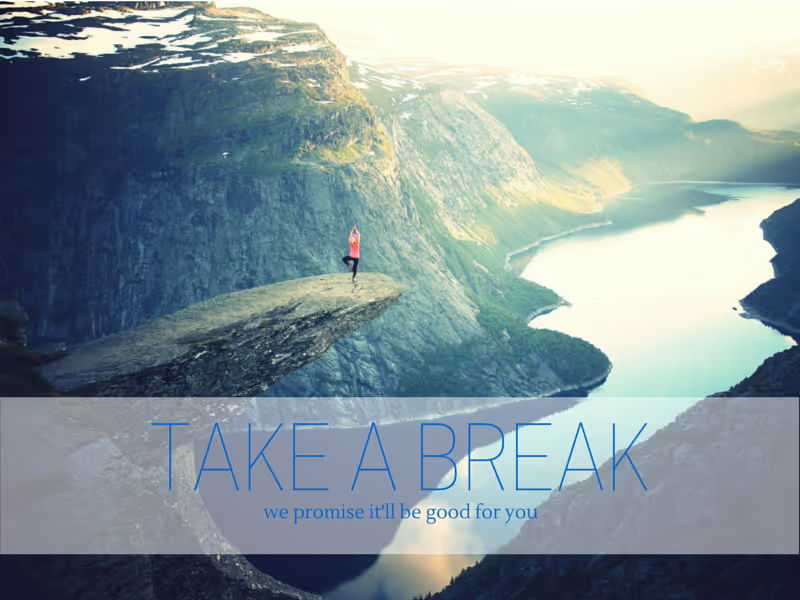
Take a break from the yearbook committee: 3 creative ideas that will bring you back refreshed
Funny Videos
If there’s one thing that can get you laughing, it’s a compilation of funny videos on YouTube. So on those days it's too hot to venture outside (or too rainy), jump online and spend a few hours enjoying cute kittens, adorable babies or people pulling pranks on their significant others. As you find a few that really get you giggling, save them in an email or a spreadsheet that you can refer back to during the school year. While these videos will help you to relax after a stressful publication season, they’re also a great tool for breaking up or starting off a committee meeting with something hilarious when you all come back together in the fall!Music Playlist
Music is a great way to spur creativity. It’s also an excellent tool to help you unwind. This summer, spend some time pulling together a great playlist of all your favorite music, past and present. Try to incorporate some artists that may be less well-known to your committee, as changing rhythms, tones and timbres have been shown to really engage the creative side of your brain.1 Personally, I find that a playlist full of songs without words really helps when reading, writing, or editing. This summer, you can use this playlist at the beach, while you’re working on your house or mowing the lawn, or as you’re pulling together your class syllabi for the school year. Then bring your playlist to your yearbook committee meetings to share with your team in the fall!Practice Exercises
Building creativity--both for yourself and among your yearbook committee--means accessing both the left and right sides of your brain. To really engage your ingenuity, you need exercises that work both sides of your brain at the same time. Here are a few great ones to get you started:- Look for new ideas: To think outside of the box on a more regular basis, you have to train your brain to look for creative ideas when you’re living everyday life. To make this a priority, you need the right tools to capture ideas on the go. While a pen and paper will work fine, you can also use apps like Evernote and Backpack. Both are easy to access and offer sharing capabilities, making it simple to send new concepts to the rest of your team when you’re out and about!
- Use your non-dominant side: Giving yourself a challenge by using your non-dominant hand in normal activities can stimulate both sides of your brain. Practice writing, catching a ball and picking things up with your opposite hand to get those synapses firing!
- Practice your colors: One way you can start encouraging the right and left sides of your brain to communicate better is through a color exercise. Write down different colors on a piece of paper using a marker of another color. For example, write yellow in a blue marker, green in a purple marker, etc. Then practice reading the name of the color as written. While it may not be the most thrilling party trick, it’s actually much more difficult than it sounds!
Spark Creativity Within Your Yearbook Committee
Taking a break from your yearbook committee during the summer months gives you plenty of time to refresh your mind before coming back to school in the fall. These particular tips are excellent ways to stimulate your creativity and take a break from planning and scheduling, yet they can carry into fall and be tools your yearbook committee will use. So watch some videos, relax to some tunes, and exercise your brain in silly ways. Before you know it, you’ll have a bunch of new ways to get your committee off on an innovative foot in the fall, while also enjoying your summer break! 1. https://www.sciencedaily.com/releases/2011/12/111205081731.htm
An organized yearbook adviser: how to create a yearly calendar that works
Start With a Project Timeline
Before you build your calendar, create a project timeline in a spreadsheet. This allows you to first detail out each of the small projects and features that will become part of your publication. Once complete, you can share this timeline with your committee to keep your team on track. As the yearbook adviser, a timeline makes it easier to visualize all of the dates that comprise a specific project or feature, to ensure that nothing slips through the cracks. To start working on your own timeline, we have a Google Doc you can use to plan your year! Once your timeline is complete, start adding those dates to your yearbook calendar, so that you’re always aware of what’s coming up across all of the projects your team is working on, with one glance.Add Important Dates from the School Calendar
As you’re thinking through the specific projects you’ll assign out to your committee, start adding some of the more important school events to your calendar. This includes big fundraisers, the school art fair, sports events, dances, etc. Anything major that you want to cover in the pages of your publication should wind up on your calendar. This helps you plan out who will cover big events in advance, instead of leaving everything until the last minute. You should also include any dates that are important to your committee, so that you can recognize what your team has going on as you’re assigning out content. This includes birthdays, vacations, and events that they’re participating in themselves, and therefore can’t cover. If three of your students are part of the school’s show choir, mark out their major performances. If one of your students is in the school play, make sure you note that on your calendar. This keeps all of your important date information in one centralized location. You can then use this information to plan out a month of committee activities in advance, including who will cover specific stories, knowing who has time to edit content, and more. Once you’ve assigned out content, make sure you add the name of the responsible committee member to each of the deadlines in your calendar--or, better yet, 'invite' them to the event! Now they'll get an email reminder of this event, and can add it to their own calendar, so you know they know.Include Ideas
If you have an awesome activity or exercise that would be perfect for a specific committee meeting, add it to the “notes” section of your calendar appointment. This helps you stay organized, so that you’re not constantly searching for the sticky note with that great idea at the last minute, or worse, forgetting to use it all together. To add notes to your schedule in a Google calendar, just open up the appointment and add your idea to the “Description” section, then click “Save.” To do this in your Outlook calendar, use the notes section at the bottom of your appointment. Then click “Save.”A Calendar for the Yearbook Adviser
As the yearbook adviser, you have the most dates and timelines to keep track of. Having this information in two locations--your calendar and your Google Doc timeline--makes your job easier. With your calendar, you can see exactly what’s happening for your publication on a particular day, week or month. Your timeline is more project-specific, so that you can track what’s been assigned out to your committee within each of your features, and help each committee member stay on track with their assignments. Both are important in their own way. By utilizing these two great tools together, you’re sure to be the most organized yearbook adviser on the block. And that translates to a much easier process for pulling your publication together!
10 questions to help you choose a yearbook company
Choosing the right yearbook company is no small feat. To help guide you through this crucial process and ensure the perfect fit for your school community, Treering has crafted a list of ten essential questions every adviser should ask potential yearbook companies.
1. What is the real price per book, including all fees?
Determining the actual price per yearbook can be complex, although it shouldn’t be. There’s a reason: hidden fees (similar to this $30 hamburger!). Here are a few you can ask about now so you’re not surprised later:
- Minimum book requirements
- Missed-deadline fees
- Shipping costs (include customs fees for books printed outside the US)
- Software subscriptions
- Training and support costs
- Custom cover upgrades
- 100lb. paper upcharge
- Personalized pages costs
- Online photo storage fees
Request a detailed quote that breaks down all expenses, deadlines (more on these in a bit), and exclusions. Some companies offer per-book pricing that encompasses all these elements and more.
2. Are there any costs for which the school is responsible?
We believe the yearbook shouldn’t cost schools a single penny. Zip. Nada. Zilch. Traditional yearbook companies often burden schools with additional expenses.
Explore options that remove schools from the financial equation completely (except for the ability to earn money - see number eight!). Treering, for instance, adopts an all-inclusive, per-book pricing model. Families handle online purchases, and schools stick to the fun part - designing a beautiful book.
3. How user-friendly and powerful is the yearbook software?
Effective yearbook publishing software should be user-friendly and collaborative, facilitating the quick design of beautiful pages. Seek platforms with professionally curated templates, InDesign compatibility, unlimited photo storage, and seamless integration with popular services like Google Drive, Dropbox, and social media platforms.
Request a live demonstration to gauge the software's capabilities. See how to add and move a page in the yearbook, whether portrait pages auto-adjust when roster changes arise and what system they provide to help you collect and organize photos. Even better, request a free trial and explore the features for yourself.

4. How are each student's memories captured in their copy of the yearbook?
Raise your hand if you were ever disappointed when opening your yearbook because you were only featured once or twice.
Treering believes every child deserves to see personal memories in their own custom yearbook. In today’s world, where children have photos documenting their entire lives, it would be wonderful to include these unique memories in their individual copies of the yearbook.
5. Are you locked into a specific quantity of yearbooks?
One of the reasons traditional yearbook companies still use printing presses is because they’ve invested a good deal of money in them, resulting in a revenue model strongly favoring the publisher.
With this model, schools must commit to a certain number of books in advance. If you predict incorrectly, you’re either stuck with costly leftovers or you have students who can’t purchase a book. One of the benefits of Treering’s flexibility is that you don’t have to take this gamble.
6. How many deadlines does your yearbook company require?
Streamline the yearbook creation process by focusing on a single deadline—the day the book needs to be print-ready. Treering empowers editors to control and change this date at any time without incurring fees.

7. What's the turnaround time?
A yearbook publisher using digital, on-demand printing technology and domestic printers can guarantee that your yearbook will arrive within three weeks of clicking the print-ready button, allowing you to document more of the school year.
Ask about inclusive pricing that includes bulk shipping to the school and custom presorting for easy distribution. (Bonus if they provide a free, printed proof so you can ensure your final product is perfect before it goes to print!)
8. Can I raise money with the yearbook?
The yearbook can be a great way to raise money for essential areas like technology and supplies. With traditional yearbook companies, these fundraising dollars often go to paying a yearbook invoice instead.
If you add a fundraiser to the core price of your yearbook, you’ll want to make sure your school - not your yearbook company - receives those funds.
9. What is the cost and level of support you'll receive?
Many yearbook companies will provide you with a local rep, which can be great if that person is readily available anytime you need them. Everyone edits their yearbook at different times, and you'll want someone who works on your schedule.
Make sure you’ll have help when and how you need it, see if they charge for different levels of support, and ensure you’ll have free access to help videos, training events, and articles.
10. How is the yearbook print quality?
Request a sample so you can see their print quality for yourself. Don’t worry; you don’t need to be an expert to judge the quality.
First, do the “see-through test.” Hold up a page - can you see through it? You’ll be able to easily see images from the other side of the page if the paper is less than 100lb. Next, do the “pull test.” Grab a page in the middle of the book and bounce the book up and down. Does the page rip or pull out? Finally, do the “fade test.” Leave the book out in the sun for a day. Does the cover start to fade? If it’s not UV-coated, it might.
Materials matter. Your yearbook not only holds the memories of the school year, but it’s something people hold onto for a lifetime - and should last that long.

Treering's custom yearbooks
Make every student the STAR of their own yearbook.
Everyone has thousands of photos at their fingertips. With Treering Yearbooks, you create a custom yearbook that your entire school will remember by giving each student custom pages filled with their own memories—like family vacations or hobbies that take place outside of school—in their individual copy of the yearbook. Now when each student opens their yearbook, they will find their memories and their photos making the yearbook personal to each student in your community, at no cost to the school.
1. Add Photos From Anywhere
Your school community can make their yearbooks custom by adding photos to their custom pages from your desktop or mobile device or by linking directly to Facebook, Instagram, Google Drive, Google Photos, or Dropbox.
2. Auto-Create Your Pages
Treering inspires students to tell the story of their year by choosing from memory prompts, like favorite songs and where they traveled, so they can remember the best parts of their year in and out of school. Just drag-and-drop these memories on their custom pages.
After you've selected your memories and photos, Treering will automatically populate them to your personal copy of the yearbook. You can stop there and they will look great, or you can choose to edit further. The choice is yours.
And if the two FREE pages you get with your Treering yearbook aren't enough, add as many as you need.
3. Remember Forever
Now when each student opens their yearbook, they will find their memories and their photos in their individual copy of the book, making the yearbook custom to each student in your school community.
Need ideas? Check out the winning designs from our parent design contest!

Recruit your next yearbook committee: use posters and flyers to bring on the best
Mistake #1: Using “Join the Yearbook Committee” as a Headline
If you title your poster or flyer with what you ultimately want students to do, you lose out on the opportunity to really engage them with how awesome the yearbook committee is. Always start with a captivating headline--just as you would the spreads within your book! You work with a team of students who love to brainstorm--so let's use them as a resource to create a unique title! Try to come up with a headline that draws the reader in and forces them to read more. Questions and bold statements that speak to a student’s wants will benefit you best. For example:Want to see more of yourself in the yearbook next year?
Looking for a way to meet spectacular new friends?
Need to build a more diverse resume for college?
By coming at your campaign from a “what’s in it for me” mindset of your student body, they’ll immediately be more interested in what you’re trying to recruit them for!Mistake #2: Weak Call to Action
You might be tempted to close your flyer or poster with a note that students should touch base with you before the end of the school year if they want to join. Or encourage them to email you. These calls-to-action aren't strong enough to spur an immediate response to join your yearbook committee. Instead, add a little urgency to your call-to-action at the bottom of your flyer. You can add a deadline, group size limit or an extra incentive to join today. Some great concepts include:Hurry - this yearbook committee invite closes June 15!
Don’t delay - we’re only adding five new members this year!
Join today, and don’t miss out on our fun committee outings this summer!
When students are given a timetable to join, they’re more likely to respond immediately.
Mistake #3: No Follow Up
It’s pretty common for yearbook advisers to distribute these types of flyers once, or just hang up one round of posters--and then wait for responses to come in. Because your students are inundated with messages from teachers and other campus groups all week long, you need to communicate your own offering multiple times to really get their attention. So distribute your flyers on three separate days of the week, at varying times of the day. For example, you can hand them out once at the beginning of the day, once during the lunch hour and once as everyone’s packing up to leave. Also, change up the location and message of your posters--catch their eye with something new! After the year is complete, send out an email to offer one final chance to sign up. If you only have parent email addresses, don’t be afraid to use them! They can certainly encourage their child to participate on your committee if they know you have spots available. Plus, connecting with your students in multiple ways drives home your message, and ensures you hit the widest range of potential yearbook committee members.Flyers and Posters Promote Your Cause
As you’re building out the content that you’ll include on your yearbook posters and flyers, focus on the positive. Use photos of your yearbook committee enjoying the project from this year. The familiar faces will create more of a personal connection with other students. Be sure to bullet out what made this season of the yearbook so successful, from your fabulous brainstorming sessions to how much fun the kids had getting out and taking pictures. Most of all, remind students that working on the yearbook committee means they get to put a little of their own touch on the final publication. Focusing on what’s important to your students will best communicate why the yearbook is a good fit, and translate to a lot more new faces on your team in the fall!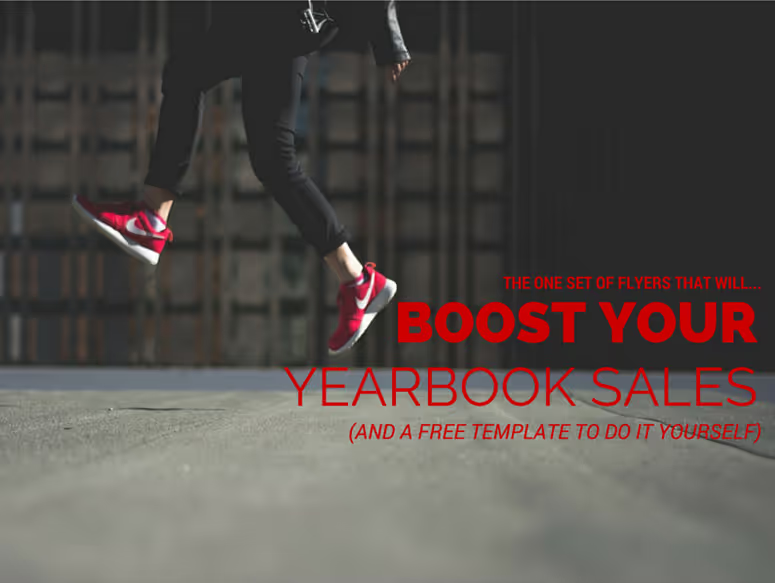
The one set of yearbook flyers that can boost your sales by 50%
- Answer their question of “What’s in it for me?”
- Only give them enough of the answer that they’re oozing with curiosity.
- Make buying the yearbook the only way to get the rest of the answer.
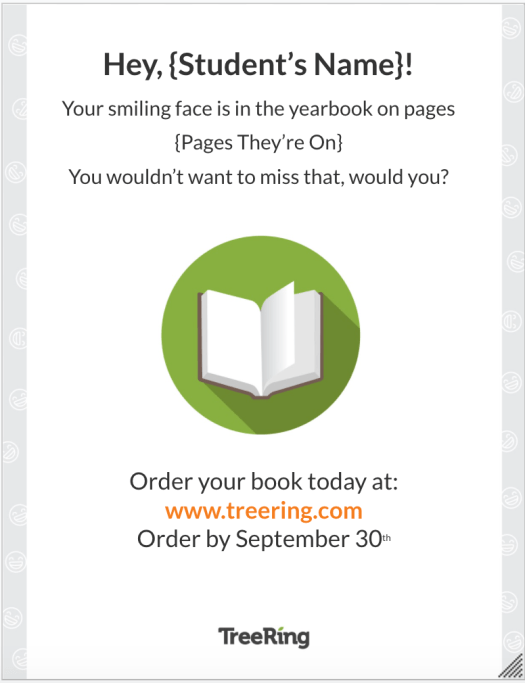 (Want to make a flyer just like this? You can grab this template right here. Be sure to read on, though, because we walk you through how to handle the rest of the process.)
Maybe you’ve seen this type of flyer on Pinterest or heard about other schools using something like this. We certainly had. But what we hadn’t seen (or heard) was how well they worked.
So, we reached out to Angie Allen, the yearbook adviser at Elizabeth Lenz Elementary School in Nevada, to talk to her about this type of flyer. She’s used it for two years and, this year, this approached to her flyers boosted her sales by 50%.
What we’re going to do in the rest of the post is to tell you why these flyers work and, with the help of Angie, share the steps you can take to create them yourself.
(Want to make a flyer just like this? You can grab this template right here. Be sure to read on, though, because we walk you through how to handle the rest of the process.)
Maybe you’ve seen this type of flyer on Pinterest or heard about other schools using something like this. We certainly had. But what we hadn’t seen (or heard) was how well they worked.
So, we reached out to Angie Allen, the yearbook adviser at Elizabeth Lenz Elementary School in Nevada, to talk to her about this type of flyer. She’s used it for two years and, this year, this approached to her flyers boosted her sales by 50%.
What we’re going to do in the rest of the post is to tell you why these flyers work and, with the help of Angie, share the steps you can take to create them yourself.
The Science Behind Why These Yearbook Flyers Work
Before we go any further, here’s Angie on why she created the flyers: “I thought, if we told the students and their parents what pages they were on, it would feel more concrete than a ‘You’re probably in the yearbook.’ message... It works. We sold 227 yearbooks prior to the flyers going out and we ended up selling 370.” Angie’s instinct was dead on. Interestingly, though, there’s a scientific reason behind it. Think about all those headlines you see on Facebook and Twitter: “...You Won’t Believe What Happened Next” and “How I {insert amazing feat} In Just {insert ridiculously short time frame}” It’s nearly impossible not to click on those headlines, right? If they almost feel like an itch that needs to be scratched, that’s because there’s a scientific reason for that: Those headlines are creating a curiosity gap (or, if you’re being scholarly, an information gap). Here’s the curiosity gap, as illustrated by a nine-year-old on a playground: The theory behind the curiosity gap is based in psychology and goes like this: when we’re confronted with a gap in our knowledge, we feel a primal urge to close that gap—and we’re willing to take any action to do so. "Such information gaps produce the feeling of deprivation labeled curiosity," wrote George Lowenstein, the psychologist who developed the theory in the early 1990s. "The curious individual is motivated to obtain the missing information to reduce or eliminate the feeling of deprivation." More recently, a study has shown that we’re most curious when we know a little about a subject, but not too much. In other words, something’s been done to raise our level of curiosity. So, how does all this science relate to your yearbook flyers? You can use your flyers to create that curiosity gap.How to Make Yearbook Flyers That Create a Curiosity Gap
Angie’s flyers did just that. They answered the “What’s in it for me?” question by telling the student how many times he or she was in the yearbook and where he or she appeared. The trick is the second part of the flyer (where the photos are in the book), because, at that point, you’ve given the person everything but the photo. This is where the curiosity kicks in. (Real world example for you: Have you ever had a friend say, “Oh, my gosh! You have to see this photo I have of you. It’s so funny!” Piques your interest, right? This is the equivalent of that.) So, how did Angie do it? We asked her about that, and she shared her tips.- Tag your photos- This is prep work, and it might sound like a lot of work, but it’s not too bad if you stay on top of it. The trick is finding someone who knows all the students at your school. (Angie was able to work with her school’s librarian to identify all the students she didn’t know.) Also, tagging photos makes life a lot easier in the end. You can automatically create index pages off that data and make sure you’re including every student a minimum number of times.
- Create Lists- To start work on the actual flyers, Angie created a list of students who hadn’t purchased a book. She then used that list to check against her index and make sure she had candid photos of those students in the yearbook. (Angie also did the same for students who already purchased a yearbook.)
- Take Extra Photos- By cross-checking a student’s name against the number of times he or she appeared in the book, Angie discovered that some students were underrepresented in the first draft. So, she went to school and specifically sought out pictures of those students to include in the yearbook.
- Fill out & Distribute Flyers- After she added her extra photos to the yearbook, Angie sat down with her flyer template (which is really similar to this free one you can grab from us!) and filled out the information found on her index. Each flyer had a student’s name, the pages on which he or she appeared, and instructions on how to buy the yearbook. Then, she distributed the flyers to each student who hadn’t bought a yearbook.

